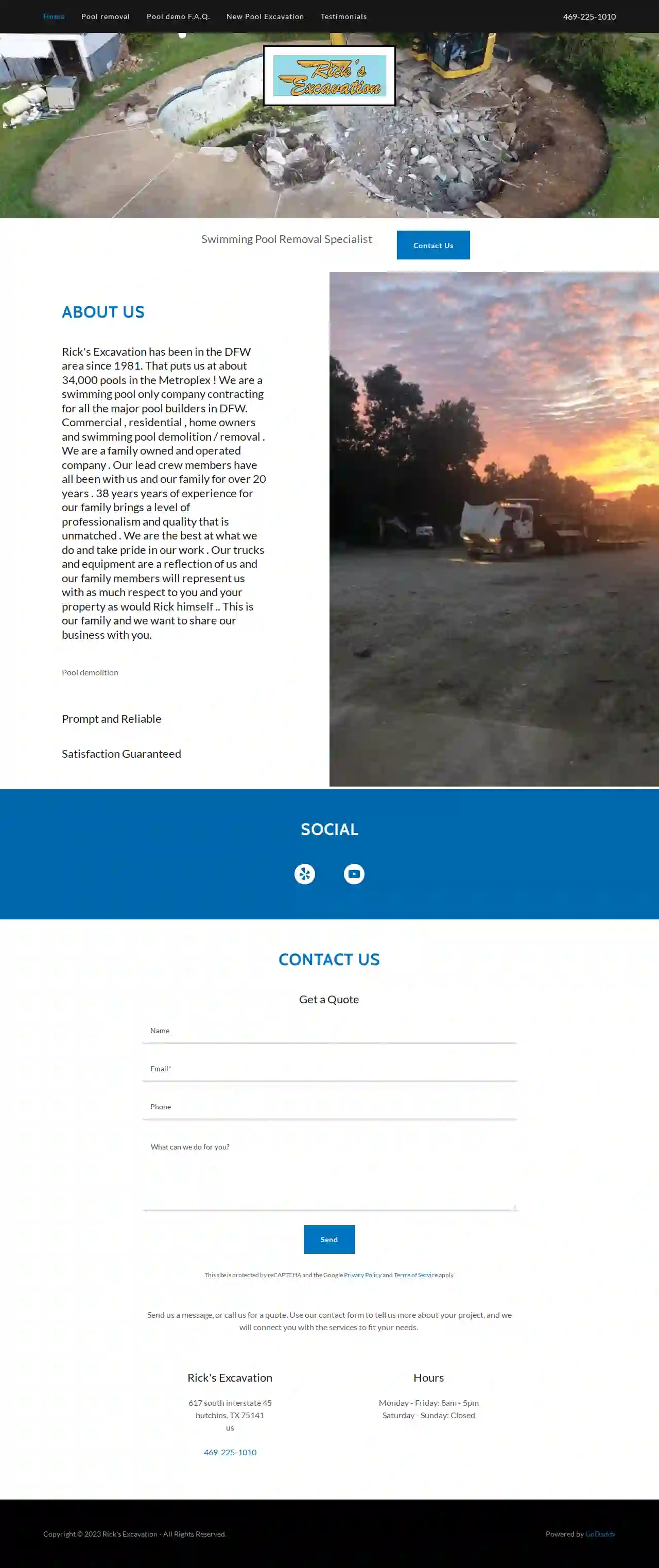Asbestos Removal Contractors Dallas
Find Asbestos Abatement in Dallas
Receive multiple Asbestos Abatement quotes for your project today! Compare profiles, reviews, accreditations, portfolio, etc... and choose the best deal.

IBARRA'S EXCAVATION
3.76 reviews4698 S. Counts Blvd., Dallas, 75211, USThe Earth Revolves Around Ibarra's Excavation. Ibarra's Excavation is a family-owned and operated company founded in mid-2015 by Angel and Genesis Ibarra. Driven by a desire for greater responsibility and challenge, they established the company to provide exceptional earth services. Prior to starting Ibarra's Excavation, Angel worked as a motor grader operator, commonly known as "THE BLADE," with GPS technology. His expertise extended to operating various other machines. Recognizing the need to expand his horizons, he decided to create Ibarra's Excavation. Ibarra's Excavation is dedicated not only to their work but also to their clients. Their commitment to excellence is evident in their impressive track record: 2015 Year Established 206 Projects Completed 2 Contractors Appointed 12 Awards Won
- Services
- Why Us?
- Gallery
Get Quote
Iron Eagle Excavation
4.58 reviewsDallas, USWe are currently working on a new website! Stay tuned for updates.
- Services
- Why Us?
- Gallery
Get Quote
Rick's Excavation, Inc.
412 reviewsDallas, US- Services
- Why Us?
Get Quote
Over 3,943+ Excavation Contractors on our platform
Our excavation providers operate in Dallas and surroundings!
ExcavationHQ has curated and vetted Top Excavation Contractors in Dallas. Find a trustworthy business today.
Frequently Asked Questions about Asbestos Removal
- Environmental Protection Agency (EPA): EPA.gov
- Health and Safety Executive (HSE): HSE.gov.uk
- Local Government Environmental Health Department:
- Inspection and Assessment: A qualified inspector identifies and assesses the asbestos-containing materials.
- Containment: The work area is sealed off with plastic sheeting and negative air pressure is established to prevent fiber release.
- Removal: Licensed professionals wearing protective gear carefully remove the asbestos-containing materials.
- Disposal: The removed asbestos is sealed in leak-proof containers and transported to a designated disposal facility.
- Air Monitoring and Clearance Testing: Air samples are collected and analyzed to ensure no asbestos fibers remain airborne.
- Restoration: After clearance testing, the work area is cleaned and restored to its original condition. The exact process may vary depending on the specific asbestos removal method and local regulations.
- Chrysotile (white asbestos):
- Amosite (brown asbestos):
- Crocidolite (blue asbestos):
- Anthophyllite:
- Tremolite:
- Actinolite:
Where can I find more information about asbestos removal regulations?
What is an asbestos survey?
What is the process for asbestos removal?
What are the different types of asbestos?
Where can I find more information about asbestos removal regulations?
- Environmental Protection Agency (EPA): EPA.gov
- Health and Safety Executive (HSE): HSE.gov.uk
- Local Government Environmental Health Department:
What is an asbestos survey?
What is the process for asbestos removal?
- Inspection and Assessment: A qualified inspector identifies and assesses the asbestos-containing materials.
- Containment: The work area is sealed off with plastic sheeting and negative air pressure is established to prevent fiber release.
- Removal: Licensed professionals wearing protective gear carefully remove the asbestos-containing materials.
- Disposal: The removed asbestos is sealed in leak-proof containers and transported to a designated disposal facility.
- Air Monitoring and Clearance Testing: Air samples are collected and analyzed to ensure no asbestos fibers remain airborne.
- Restoration: After clearance testing, the work area is cleaned and restored to its original condition. The exact process may vary depending on the specific asbestos removal method and local regulations.
What are the different types of asbestos?
- Chrysotile (white asbestos):
- Amosite (brown asbestos):
- Crocidolite (blue asbestos):
- Anthophyllite:
- Tremolite:
- Actinolite: